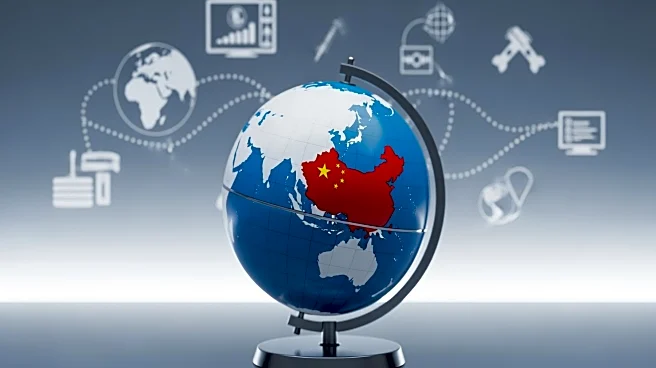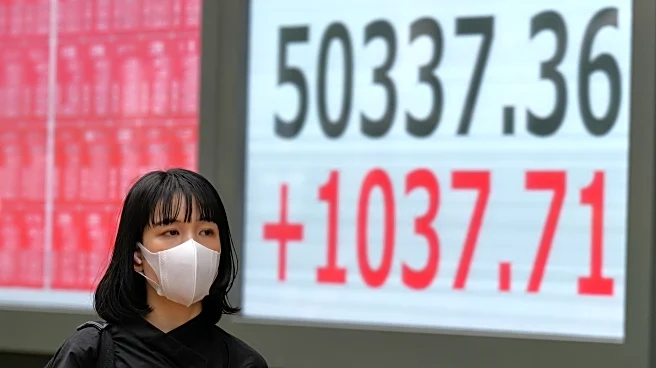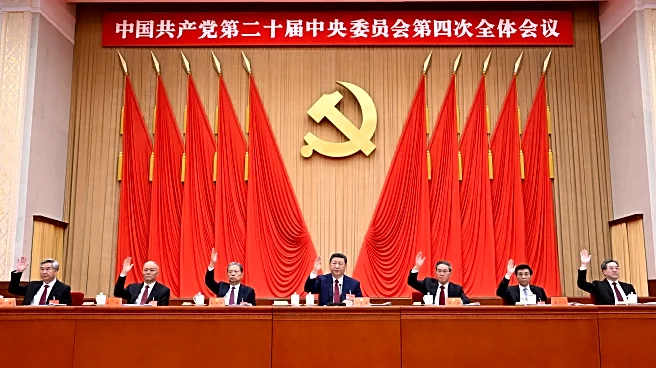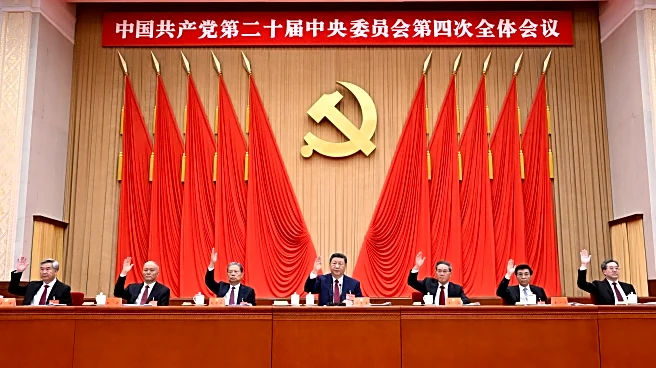What's Happening?
China's industrial profits experienced a significant increase of 21.6% in September, marking the largest jump in nearly two years. This surge is attributed to Beijing's policies aimed at reducing fierce price competition across various industrial sectors.
Despite ongoing trade tensions with the U.S., Chinese manufacturers have managed to navigate uncertain trade policies and weak consumer confidence domestically. The National Bureau of Statistics reported that profits for the manufacturing sector rose by 9.9% from January to September, while high-tech manufacturing saw a 26.8% increase in September alone. However, the mining sector faced a decline in profits by 29.3%. The overall economic growth in China slowed to 4.8% in the third quarter, the slowest rate in a year, with fixed-asset investment contracting unexpectedly.
Why It's Important?
The surge in China's industrial profits highlights the resilience of its manufacturing sector amidst global trade challenges, particularly with the U.S. This development is crucial as it reflects China's ability to maintain economic stability despite external pressures. The increase in profits could bolster China's position in ongoing trade negotiations and impact global economic dynamics. U.S. industries may face increased competition from Chinese manufacturers, potentially affecting market shares and trade policies. Additionally, the focus on high-tech manufacturing suggests a strategic shift towards technological advancements, which could influence global tech markets and innovation trends.
What's Next?
China's economic planners have pledged to boost domestic demand and focus on technological breakthroughs, indicating a strategic shift in economic policy. Analysts predict a slowdown in export growth in the final quarter due to rising global trade barriers. The Chinese government may continue to implement policies to support industrial growth and technological advancements, potentially affecting international trade relations. U.S. policymakers and businesses will need to monitor these developments closely, as they could impact trade negotiations and economic strategies.
Beyond the Headlines
The emphasis on technological advancements and industrial upgrades in China could lead to long-term shifts in global manufacturing and innovation landscapes. As China continues to invest in high-tech sectors, it may challenge U.S. dominance in technology and innovation, prompting strategic responses from American companies and policymakers. The evolving trade dynamics could also influence global supply chains and economic partnerships, necessitating adaptive strategies from international stakeholders.















